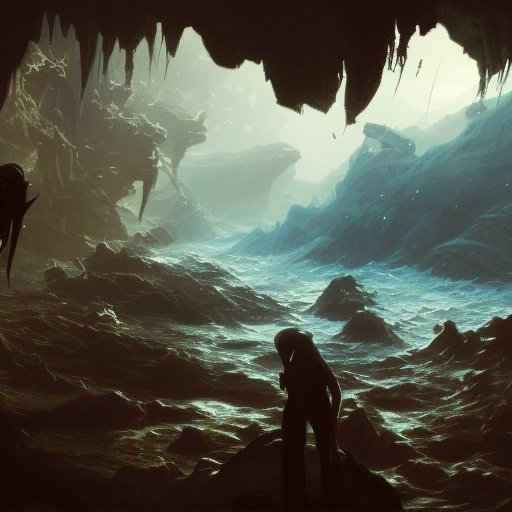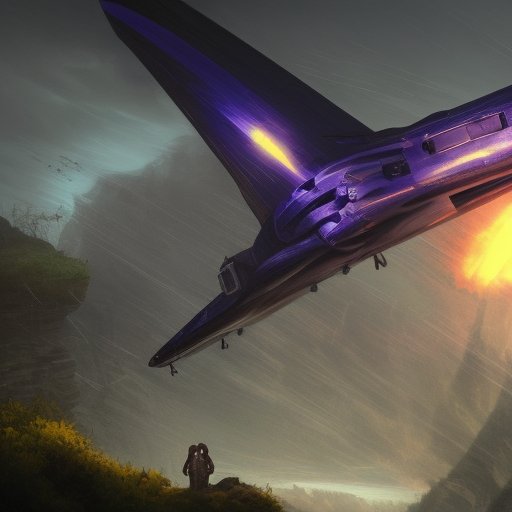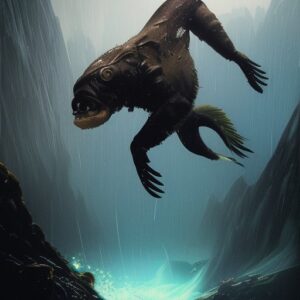
The future is a wild, unpredictable place, full of biological wonders and technological terrors. Two of the most fascinating creatures to have emerged in this strange new world are the Time-leaping Sea Apes and the Cyber-imprudent Fishzenep. The former are a unique and wily species that have evolved a remarkable ability to bend time and space, leaping through history like acrobats in a circus. The latter, meanwhile, are the unforeseen result of cybernetic experimentation, a curious and unpredictable species of fish that have both amazed and alarmed scientists and fishermen alike. In this article, we take a close look at these creatures, their impact on our world, and the ethical and ecological issues they raise.
I. Introduction
Welcome, dear readers, to a journey through the unknown and the extraordinary. Today, we explore two of the most remarkable creatures ever to emerge from the strange and wondrous depths of the sea: the Time-leaping Sea Apes and the Unintended Cyber-imprudent Fishzenep.
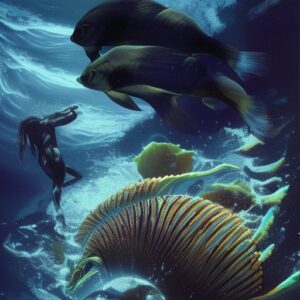
The Time-leaping Sea Apes, as their name suggests, possess an unparalleled ability to manipulate the fabric of time and space, bending the laws of physics to jump through the ages like skilled acrobats in a futuristic circus. Their speed and agility allow them to outmaneuver their prey with ease, leaping into the past to avoid danger or into the future for a strategic advantage.
The Unintended Cyber-imprudent Fishzenep, on the other hand, are the fascinating result of cybernetic experimentation gone awry. Born from the unintended consequences of lab-grown research, these unpredictable creatures possess both the unpredictability of fish and the disruptive force of cutting-edge technology. They blur the line between biology and machine in a way never before imagined, with both positive and negative impacts on the environment and humanity.
But these creatures are not simply intriguing curiosities; they raise profound questions about the future of life on our planet. As we delve into the depths of their biology and behavior, we’ll explore the profound ecological implications they hold, the ethical considerations they raise, and the evolutionary paths they may continue to take as our world changes around them.
So fasten your spacesuits, strap on your jetpacks, and prepare to embark on a journey into the unknown – a journey that may forever change the way we understand our place in the cosmos.
II. The World of the Time-leaping Sea Apes
To truly understand the wonder of the Time-leaping Sea Apes, we must first delve deep into their world. These creatures, with their wily and unbounded nature, are a marvel of evolution. Their physiology is a testament to millions of years of masterful design, from their sleek forms to their lightning-fast reflexes.

Found primarily in the open oceans, these creatures are not bound by the physical laws that restrict others in their environment. They can manipulate the very fabric of time and space, moving at incredible speeds to leap forward and backward through history.
But their abilities go beyond merely moving backward or forward in time. They also exploit their incredible senses, using their keen eyesight, hearing, and smell to hunt and outmaneuver their opponents with ease. They are social creatures, too, living in small groups that work together to track and kill their prey.
Their curious behavior, however, has raised ethical concerns. They are known to meddle with time and even impact historical events, leading to the vexing question of whether they are tampering with the course of natural history.
But despite the debates their abilities have sparked, there is no denying that the Time-leaping Sea Apes are a fascinating example of the strange and unexplained marvels of the natural world. They inspire curiosity, wonder, and a desire to explore the unknown depths of our world, and they may hold the key to unlocking our own potential as a species.
III. The Rise of Cyber-imprudent Fishzenep
The Unintended Cyber-imprudent Fishzenep are a unique and fascinating species, born from the unexpected consequences of human experimentation with genetic engineering. Cybernetic enhancements were meant to make farming more efficient, with the goal of producing more food with less resources to feed an ever-growing human population. But something went terribly wrong in the lab, and the result was a breed of fish with heightened intelligence, strength, and a curious taste for technology.
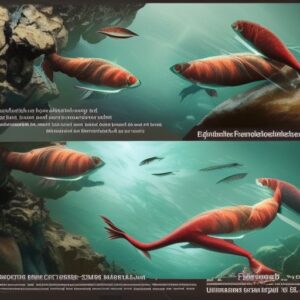
These otherworldly creatures may look like ordinary fish at first glance, but they quickly reveal themselves to be anything but. They possess the ability to swim at incredible speeds, dodge predators with ease, and communicate with each other on a level beyond human comprehension. They also have a fondness for all things technological, a habit that has caused tremendous disruption in the fishing industry and the world at large.
Despite their impressive abilities, the Cyber-imprudent Fishzenep have caused both positive and negative effects on the environment. On the one hand, their enhanced intelligence could lead to a better understanding of the marine ecosystem, making it easier to identify and combat pollution and overfishing. On the other hand, their taste for technology has already wreaked havoc on the delicate balance of marine ecosystems, and the long-term impact of their presence is unknown.
The rise of the Unintended Cyber-imprudent Fishzenep serves as a cautionary tale of the unintended consequences of playing with the fabric of life itself. While technology has the power to change the world, its transformative potential comes with a responsibility to learn, anticipate, and control the effects it has on our environment and the creatures we share it with.
IV. The Ecological Implications
The ecological implications of these extraordinary creatures are vast and multifaceted. While the Time-leaping Sea Apes don’t seem to have much direct impact on the marine ecosystem due to their small numbers, their extraordinary abilities raise profound questions about the nature of time and existence.
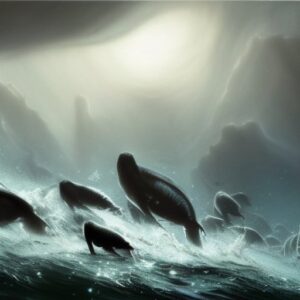
The Unintended Cyber-imprudent Fishzenep, on the other hand, are already having a direct impact on the marine ecosystem, with their disruptive force causing significant changes in oceanic food chains and altering the balance of power among various species. They are also spreading rapidly in uncontrolled environments, making it difficult to contain their populations and manage their impact.
But there may be ways to mitigate their impact and preserve the delicate balance of life in the oceans. Possible solutions include targeted culling, the creation of designated protected areas, the development of new technology to limit their spread, and even the introduction of natural predators to keep their populations in check.
Of course, implementing these solutions will require cooperation and collaboration across the scientific, governmental, and commercial sectors. It may also require a fundamental shift in how we think about the relationship between humans and the natural world – a shift towards a more humble and respectful approach that recognizes the value of preserving the diversity of life on our planet.
As these creatures continue to evolve and adapt to changing environments, still more ecological challenges may arise. But by working together, using our ingenuity and our compassion, we may yet find a way to preserve the beauty and wonder of the oceans for generations to come.
V. Ethical Considerations
As we explore the unbelievable universe of our futuristic creatures, we can’t help but consider the ethical implications of their existence. The genetic experimentation that has spawned these enigmas pushes the boundaries of scientific boundaries and raises profound moral questions about our relationship with nature.
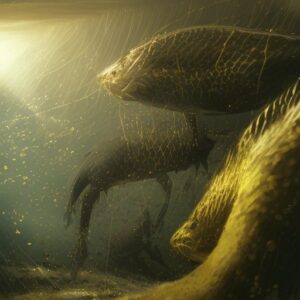
One of the key points of debate is the question of where to draw the line when it comes to artificial enhancements. With the Cyber-imprudent Fishzenep, we see the unforeseeable consequences of pushing the limits of cybernetic technology too far, unleashing a wholly new species with a radically new symbiotic relationship with the world.
Moreover, these genetic manipulations on animals also have immense consequences for the ecosystems in which they live. The fact that these creatures were created in a lab and subsequently released into the wild raises challenging issues about our responsibility toward nature and the potential impact of our interventions.
It raises difficult questions about ideas like bioengineering and how they intersect with larger debates about the nature of humanity’s relationship with our environment. Furthermore, this begs deeper discussions about the necessity and sustainability of such exploration and experimentation in the first place. What is more important, the pursuit of scientific discovery or our moral and ethical core?
As we continue to push the boundaries of what is possible, it is imperative that we question the impact of our actions both on ourselves and the planet. The ethical, philosophical and moral implications of our scientific endeavors cannot be ignored and must be considered when deciding the future of emerging species of creatures such as the Time-leaping Sea Apes and the Unintended Cyber-imprudent Fishzenep.
VI. The Future of Evolution
As we consider the future of our world and the creatures that inhabit it, we can’t help but wonder what lies ahead for the Time-leaping Sea Apes and the Unintended Cyber-imprudent Fishzenep. Will they continue to evolve and adapt to changing circumstances, or will they face extinction in the face of new and unforeseen challenges?

One thing is certain – these creatures have already pushed the boundaries of what we thought possible in the realm of biology and technology. The Time-leaping Sea Apes have already demonstrated a remarkable ability to manipulate time and space, adapting to changing environments and staying ahead of their prey.
As for the Unintended Cyber-imprudent Fishzenep, the possibilities are nearly endless. With their unique combination of biology and machine, they hold the potential to evolve in ways we can’t even imagine – perhaps even gaining the power of self-awareness and autonomy.
But with great power comes great danger, and the future of these creatures is not without risk. As we continue to push the limits of genetic engineering and cybernetics in pursuit of new and better ways to shape the world around us, we must be mindful of the consequences of our actions. We must tread carefully, aware of the potential risks and unintended consequences of our actions, lest we inadvertently bring about a cataclysmic future where man and machine are indistinguishable.
In the end, it is impossible to say what the future holds for the Time-leaping Sea Apes and the Unintended Cyber-imprudent Fishzenep. But one thing is certain – they remind us that the future of life on our planet is more extraordinary and unpredictable than we could ever imagine.
VII. Conclusion
As we conclude our journey into the depths of the unknown, it’s clear that the Time-leaping Sea Apes and Unintended Cyber-imprudent Fishzenep have much to teach us about the future of life on our planet. These remarkable creatures offer us a glimpse into the strange and wondrous world that lies ahead.
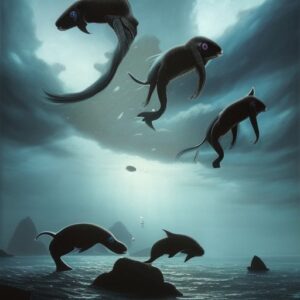
Their biology and behavior reveal the incredible diversity and adaptability of life in the universe, as well as its profound interconnectedness. Their impact on our environment and society reminds us of the delicate balance between innovation and sustainability. And the ethical considerations they raise force us to confront the profound questions about what it means to be alive, and what we want the future of life on our planet to look like.
But above all, these futuristic creatures remind us of the power of the unknown to inspire us, to challenge us, and to push us beyond our limits. As we continue to explore the uncharted territories of the cosmos, we must be bold in our curiosity, humble in our understanding, and mindful of the impact that our actions have on the world around us.
So let us boldly venture forth, into the depths of space and time, with the knowledge that the future of life on our planet is in our hands. Let us embrace the unknown, and the wonders it holds, with open hearts and minds. And let us strive to build a future that is as rich, diverse, and fascinating as the astonishing creatures we have discovered on our journey.
